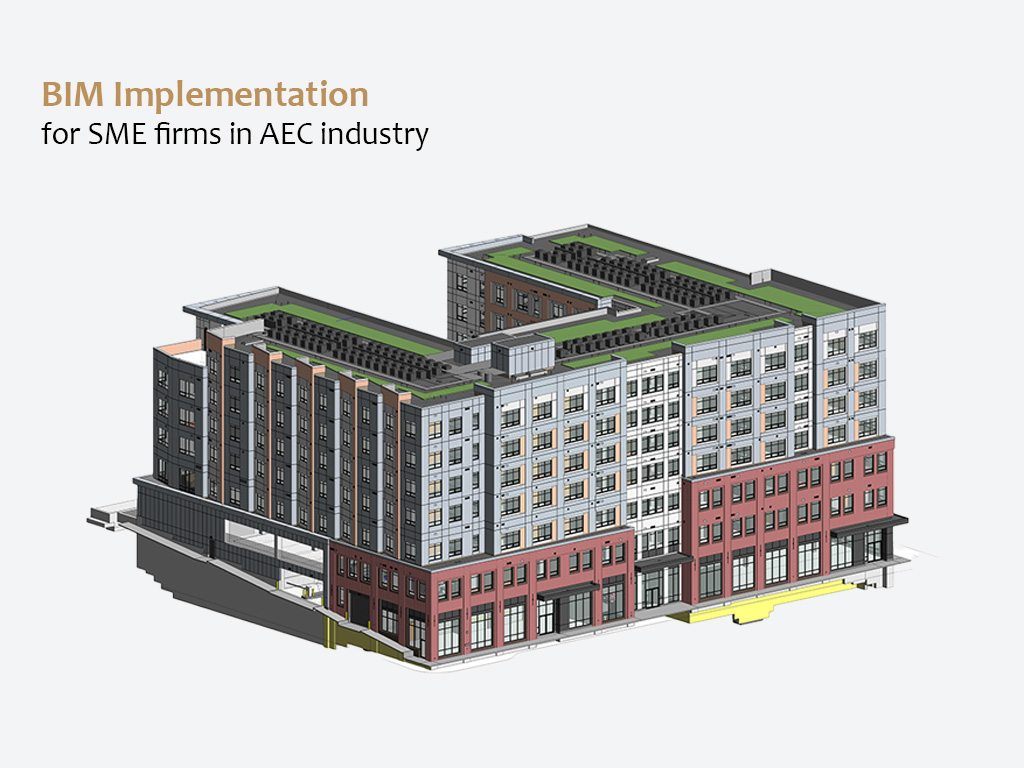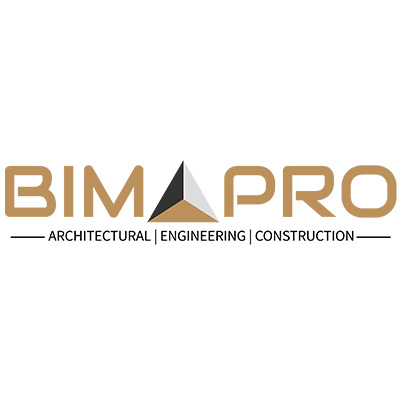BIM Implementation Strategies for SME firms in AEC Industry

The architecture, engineering, construction, and operations
(AECO) industry across United States is rapidly transitioning to a digital
landscape, and Building Information Modeling (BIM) has become an integral part
of this transformation.
BIM implementation is increasingly gaining traction, as
building industry stakeholders recognize the benefits of virtual prototyping,
which allows for more efficient design reviews, greater precision in
construction, and the ability to evaluate cost-saving alternatives and other
critical parameters.
Small and Medium Enterprises (SMEs) in USA play a vital role
in the architecture, engineering, construction, and operations (AECO) industry,
and their innovative practices are crucial for implementing Building
Information Modeling (BIM) within an Integrated Design framework.
While USA governments encourage BIM-oriented approaches in
their state and federal projects across multiple sectors of AEC industry. Small
companies’ involvement in common BIM adoption is often insufficient, resulting
in a significant BIM-gap that hinders the industry’s overall adoption of
innovative BIM technologies in construction.
Encouraging SMEs to adopt BIM can help improve the
productivity and economic profitability of the AECO industry, as well as reduce
risks for individual firms.
BIM Implementation for SME Firms
Managing the implementation of Building Information Modeling
(BIM) for Small and Medium Enterprises (SMEs) is a critical task that requires
addressing various risk diversities and identifying the barriers and challenges
that can impede the change process.
Although BIM implementation is expanding, it remains slow
among SME firms, and larger companies with in-house BIM capabilities typically
undertake large and complex BIM projects, utilizing BIM software and
technological resources to develop 3D models and coordinate internally to
ensure successful project completion.
The architecture, engineering, and construction industry in
the USA must overcome several challenges to achieve effective BIM
implementation, which involves technology, process, people, policy.
The transition to using BIM is dependent on changing
hardware and software, which are essential in the BIM implementation process in
the United States
BIM business transformation can deliver real business
benefits, but it requires companies to evolve their current beliefs, culture,
technology, and standards. Changing the way infrastructure organizations work
today is no small task.
This transformation requires organizational and process
improvement, technology adoption, and alignment with overarching strategies and
goals to fully realize the organization’s BIM vision.
Critical Factors for BIM Implementation for SME firms
There are many new workflows and procedures that must be
planned. Tested and deployed but these high-level BIM implementation areas are
critical for generating change in the SMEs organization.
1. Developing Policies and Strategies
The implementation of BIM can be strategically aligned with
an organization’s overall goals and objectives to enhance competitive
positioning, achieve operational excellence, and ensure effective project
delivery. Developing policies and strategies for the implementation of BIM can
offer various benefits in this regard.
2. Change Management
The BIM change and adoption program built to deliver the
expected benefits in operational performance through program coordination,
knowledge transfer, performance management,
and education and training. The AECO industry must invest in
training programs and workshops to enable workers to acquire the necessary
skills and knowledge to implement BIM effectively.
3. Define Standards and Processes:
Well-defined standards and processes must be established to
govern BIM usage in all projects and programs. These standards and processes
should support the application of BIM practices and enable stakeholders to
operate effectively while adhering to established methods.
4. Integrated BIM Technology
Integrated BIM technology refers to the use of BIM process
and model management tools that are seamlessly integrated with enterprise
systems. This integration enables the delivery of information in a
collaborative environment across the organization and project teams. Also, BIM
implementation relies heavily on technology, which includes hardware, software,
and other digital tools.
BIM Implementation Strategies for SME Firms
Small and medium size firms in AEC industry face various
challenges to implementing BIM. However, with the right strategies and
approaches can successfully implement BIM and provide optimum benefits of
technology. Following strategies can be considered for BIM implementation.
1. Start Pilot Projects
SME firms should start testing their BIM technology with the
small project or pilot projects. It is a way to gain BIM experience and
confidence in using BIM software. It will help in mitigating risks and cost
associated with BIM implementation.
2. Utilize Government Incentives
In USA, government offers various schemes for SMEs to
participate in state and federal construction BIM projects. Some minority based
and women minority-based firms can also be part of such schemes. These
incentives provide tax credits, training programs, provide staff and
counterweight the cost of BIM implementation.
3. BIM Partnership
SME firms can collaborate with other firms who already have
been gaining knowledge and working experience in BIM. Joining such communities
can help SME firms in learning how to optimize BIM utilization.
4. BIM Training and Programs
SME firms should invest their time and money in training and
education programs to ensure their team and management have well skills and
knowledge to use BIM. BIM training can be provided through in-house, online
certification courses, and hiring BIM trainers or BIM consultants.
5. Cloud based BIM Tools
Cloud based tools centralize information and connecting the
workflow, team and data to collaborate together and build better. This reduces
risk, improve quality, and deliver projects on time and on budget.
Read another article: BIM LOD 100, 200, 300, 350, 400, 500
Conclusion
In conclusion, BIM implementation can be a significant
challenge for small and medium-sized construction firms. However, by developing
a clear strategy that includes defining clear goals, starting small, investing
in training, selecting the right software and hardware, collaborating with
stakeholders, and evaluating performance, small and medium-sized construction
firms can successfully implement BIM and enjoy the benefits of this innovative
technology.
Original Content of this blog is published at












